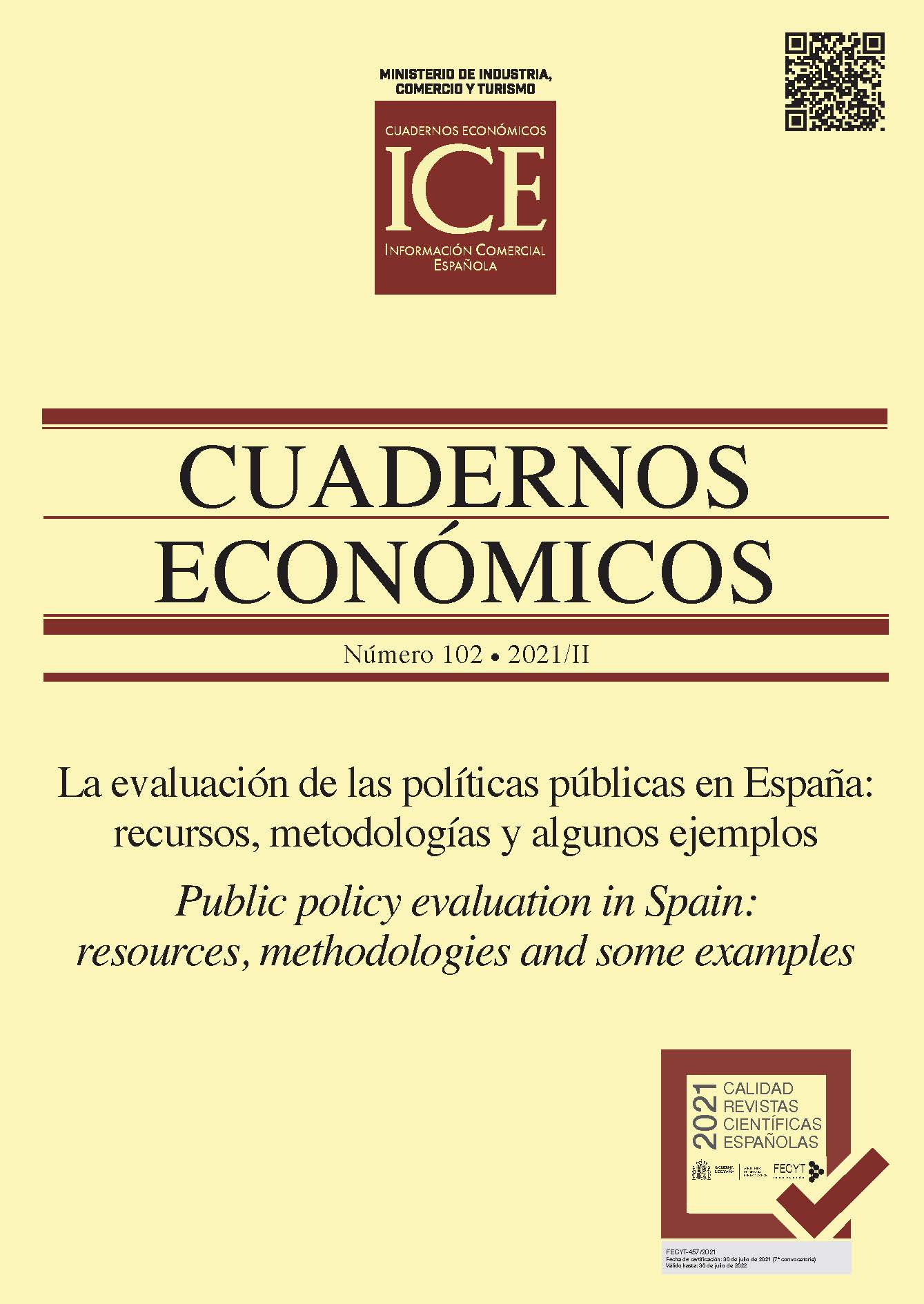Statistical Profiling: an instrument for evaluating the impact of Incorpora
##plugins.themes.bootstrap3.article.sidebar##
Downloads
##plugins.themes.bootstrap3.article.main##
In this article, we present a causal evaluation exercise in the context of statistical profiling applied to an employment program created by La Caixa Foundation and called Incorpora. This program consists of a mechanism of support and repositioning in the labor market of people at risk of exclusion. Our results suggest that the training given within the program contributes to a general improvement in the average employability of the participants in the program, but it is observed that this effect declines with unemployment duration. On the other hand, we find that the Incorpora program improves the probability of finding and retaining employment as well as the time worked and even the salary once re-employed for all the groups analyzed regardless of gender, nationality, previous sector of employment or previous work experience. Specifically, employability increases between 3 and 4 percentage points thanks to the program and the effect on the number of months accumulated in employment is situated, depending on the cohort, between 3 and 4 months three years after leaving it.
##plugins.themes.bootstrap3.article.details##
- Yolanda Fátima Rebollo-Sanz, José Ignacio García Pérez, Active labor market policies for workers with difficult job placement experiences: an impact evaluation , Cuadernos Económicos de ICE: No. 102 (2021): The evaluation of public policies in Spain: resources, methodologies and some examples
- Sergi Jiménez-Martín, Michele Boldrin, Presentación: Perspectivas teóricas sobre el futuro de la Seguridad Social , Cuadernos Económicos de ICE: No. 64 (1998): CRISIS Y REFORMAS DE LOS SISTEMAS DE SEGURIDAD SOCIAL: TEMAS A DEBATE. VOLUMEN I. PERSPECTIVAS TEORICAS
- Sergi Jiménez-Martín, Alfonso R. Sánchez, Incentivos y reglas de jubilación en España , Cuadernos Económicos de ICE: No. 65 (1999): CRISIS Y REFORMAS DE LOS SISTEMAS DE SEGURIDAD SOCIAL: TEMAS A DEBATE. VOLUMEN II. ASPECTOS EMPÍRICOS
- Florentino Felgueroso, Presentación: Capital humano y empleo , Cuadernos Económicos de ICE: No. 74 (2007): CAPITAL HUMANO Y EMPLEO
- Florentino Felgueroso, María José Pérez-Villadóniga, Manuel F. Bagües, Sobre la composición óptima de los tribunales evaluadores: el caso de las oposiciones a Jueces y Fiscales , Cuadernos Económicos de ICE: No. 74 (2007): CAPITAL HUMANO Y EMPLEO
- Sergi Jiménez-Martín, Jaume García Villar, Determinación de ofertas iniciales en la negociación de salarios en España , Cuadernos Económicos de ICE: No. 66 (2002): MICROECONOMETRIA Y CONDUCTA: APLICACIONES PARA EL CASO ESPAÑOL
- Sergi Jiménez-Martín, Presentación: ensayos de microeconometría aplicada (en España). Un comentario , Cuadernos Económicos de ICE: No. 66 (2002): MICROECONOMETRIA Y CONDUCTA: APLICACIONES PARA EL CASO ESPAÑOL
- Sergi Jiménez-Martín, Presentación , Cuadernos Económicos de ICE: No. 63 (1997): ASPECTOS DEL MERCADO DE TRABAJO ESPAÑOL
- Sergi Jiménez-Martín, Michele Boldrin, Presentación: La evidencia empírica; presentación y valoración , Cuadernos Económicos de ICE: No. 65 (1999): CRISIS Y REFORMAS DE LOS SISTEMAS DE SEGURIDAD SOCIAL: TEMAS A DEBATE. VOLUMEN II. ASPECTOS EMPÍRICOS
Arellano, F. A. (2010). Do training programmes get the unemployed back to work? A look at the Spanish experience. Revista de economía aplicada, 18(53), 39-65.
Card, D., Kluve, J., & Weber, A. (2018). What works? A meta analysis of recent active labor market program evaluations. Journal of the European Economic Association, 16(3), 894-931.
Desiere, S., Langenbucher, K., & Struyven, L. (2019). Statistical Profiling in Public Employment Services: An international comparison. OECD Social, Employment and Migration (Working Paper No. 224). https://doi.org/10.1787/1815199X
Epanechnikov, V. A. (1969). Non-parametric estimation of a multivariate probability density. Theory of Probability and Its Applications, 14(1), 153–158.
Felgueroso, F., García-Pérez, J. I., & Jiménez-Martín, S. Perfilado estadístico: un método para diseñar políticas activas de empleo. FEDEA y Fundación Ramón Areces.
García-Pérez, J. I. (2008). La muestra continua de vidas laborales: una guía de uso para el análisis de transiciones. Revista de Economía Aplicada, 16(1), 5-28.
Goodman-Bacon, A. (2018). Difference-in-differences with variation in treatment timing. NBER, National Bureau of Economic Research (Working Paper Series No. 25018).
Heckman, J. J. (1979). Sample Selection Bias as a Specification Error. Econometrica, 47(1), 153-161. https://doi.org/10.2307/1912352
Rosenbaum, P. R., & Rubin, D. B. (1983). The central role of the propensity score in observational studies for causal effects. Biometrika, 70(1), 41-55.
Rosenbaum, P.R., & Rubin, D. B. (1985). Constructing a Control Group Using Multivariate Matched Sampling Methods that Incorporate the Propensity Score. The American Statistician, 39(1), 33-38.


